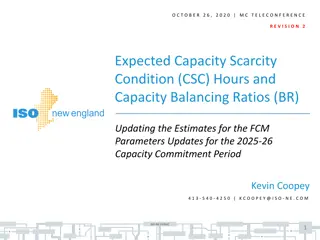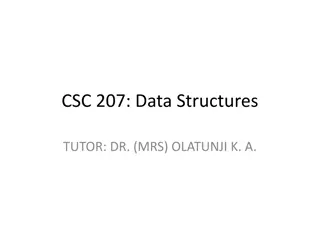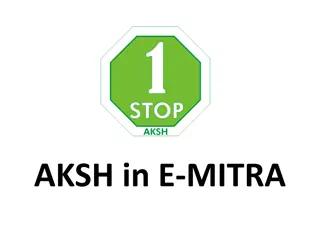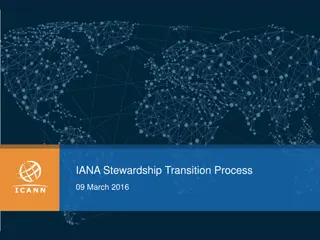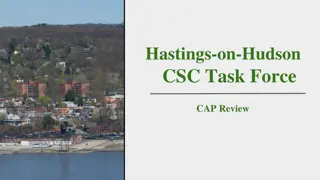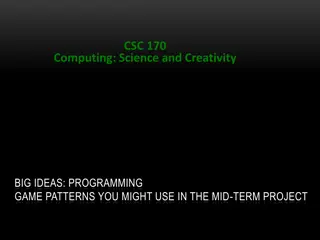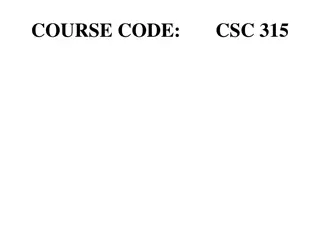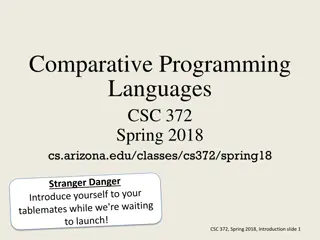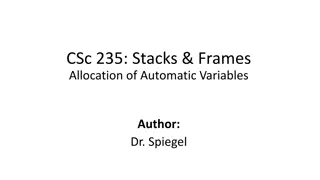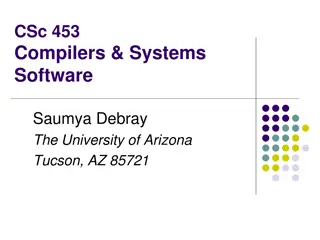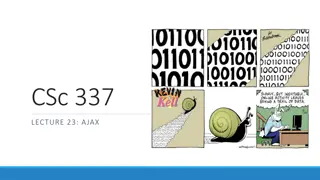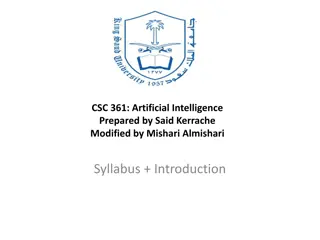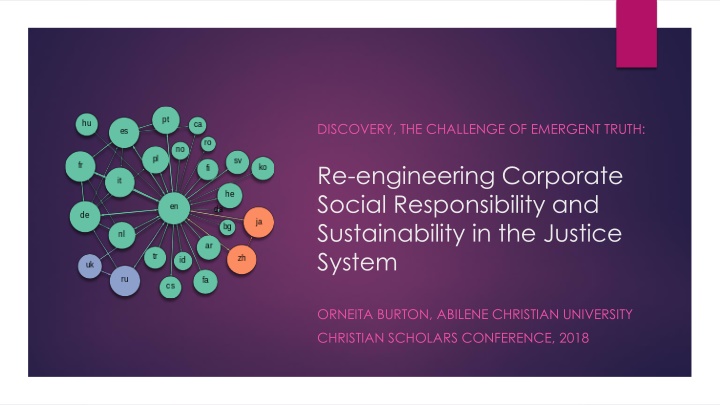
Re-engineering Corporate Social Responsibility and Sustainability in the Justice System
Explore the challenges of emergent truth in the justice system through the lens of corporate social responsibility and sustainability. Delve into the impact of globalization on the growth of prisons in rural America and the consequences of mass imprisonment. Discover the interconnectedness between the criminal justice system, community structure, and emerging social paradigms.
Download Presentation

Please find below an Image/Link to download the presentation.
The content on the website is provided AS IS for your information and personal use only. It may not be sold, licensed, or shared on other websites without obtaining consent from the author. If you encounter any issues during the download, it is possible that the publisher has removed the file from their server.
You are allowed to download the files provided on this website for personal or commercial use, subject to the condition that they are used lawfully. All files are the property of their respective owners.
The content on the website is provided AS IS for your information and personal use only. It may not be sold, licensed, or shared on other websites without obtaining consent from the author.
E N D
Presentation Transcript
DISCOVERY, THE CHALLENGE OF EMERGENT TRUTH: Re-engineering Corporate Social Responsibility and Sustainability in the Justice System ORNEITA BURTON, ABILENE CHRISTIAN UNIVERSITY CHRISTIAN SCHOLARS CONFERENCE, 2018
Research Reference Result? During the last two decades, the large-scale use of incarceration to solve social problems has combined with the fall-out of globalization to produce an ominous trend: prisons have become a growth industry in (rural) America.
Example: Prison Communities We struggled, myself and a brother, two sisters, my mother there, to keep the farm in the family and keep it going. And we barely made a living. So That's what made me appreciate the job so much, that it was a lot easier and the money was secure. Before I even started the job, they was always telling me, the worse things get out in the world, the better things get in jail. You llalways have a job. T. Flegel, Family Farmer and Retired Prison Guard, Coxsackie, New York
Research Reference Huling, T. 2002. BUILDING A PRISON ECONOMY IN RURAL AMERICA. Marc Mauer and Meda Chesney-Lind, Editors. The New Press. From Invisible Punishment: The Collateral Consequences of Mass Imprisonment. In the United States today, there are more prison(er)s than farm(er)s. In the United States today, 1 in 3 adults have a criminal record, yet the US experienced many times more school shootings (288) between 2009 and 2018 than 27 other countries combined.
Observation: We cannot interpret a system s behavior without fully accounting for the structure of the network behind it.
Community Structure Focus on Flourishing Community Node Types, Size and Distance in Healthy Communities: Financial Academic Business Employment Health
Community Structure Focus in a Dying Community structure Existence of Nodes Types, Size and Distance in Relatively Unhealthy, Communities AND source and level of connectivity embedded node: Financial Academic Business Employment Health Justice embedded, non-integrated network
Research Question: What is the structure and impact of the justice system network as it interacts within the local community?
Network Measures Networks are measured in terms of three characteristics: network size (many contacts increase the likelihood of opportunities), network density (strong connections between contacts lower the likelihood of opportunities) network centralization or hierarchy (one or a few contacts connected to the other contact
Research: Case Study No. 1 Thriving community Growth from population of 30,000 to 500,000 Removal of predatory systems (holes) (Galbraith, 2008) Change in focus, node types, size
(Burt, 2015) Holes in social structure are variably reinforced by the social organization around the hole. The more reinforced the hole, the greater the difficulty in bridging it, but, The more likely a successful bridge will carry information (that is) novel, and so potentially valuable, to people on the other side.
Concepts/Claims from Network Theory: 1. Networks create social capital for individuals (Burt 1992; Bourdieu 1985) and communities (Putnam 2000; Portes & Sensenbrenner 1993) 2. Networks create status (Podolny 1993) and category (Zuckerman 1999) differences in markets 3. Network forms of organization are an alternative to markets and hierarchies (Powell 1990) 4. Networks are the defining feature of innovative regions such as Silicon Valley (Saxenian 1984; Owen-Smith & Powell 2004; Fleming et al 2007) 5. Networks are the locus of innovation in high-technology industries (Powell et. Al 1996; Stuart et. Al 1999; Ahuja 2000; Owen-Smith et. al 2002) Jason Owen-Smith, Network Theory: The Basics. https://www.oecd.org/sti/inno/41858618.pdf
Concepts/Claims from Network Theory: 6. Networks create trust and increase forbearance (Piore & Sabel 1984; Uzzi 1997) 7. Networks inspire conformity in thought and action (Galaskiewicz 1991;Mizruchi 1992) 8. Networks shape the diffusion of technologies (Rodgers 1962; Coleman et al 1966) and organizational practices (Davis 1991; Strang & Macy 2001) 9. Networks create individual tastes and preferences (Mark 1998) 10. Networks embed transactions in a social matrix, creating markets (White 1981; Baker 1984; Granovetter 1985) Jason Owen-Smith, Network Theory: The Basics. https://www.oecd.org/sti/inno/41858618.pdf
Holes in social structure are variably reinforced by the social organization around the hole. The more reinforced the hole, the greater the difficulty in bridging it, yet the more likely a successful bridge will carry information (that is) novel, and so potentially valuable, to people on the other side.
Clusters, node location, size, type, relative distances (Barabasi, 2016) Planning Approaches: RE-ENGINEERING Enterprise/Systems Architecture Community Design/Social Engineering
Research: Case Study No. 2 Stagnate Community Redistribution of resources within/between nodes Absence of supportive nodes (holes) Presence of predatory nodes prison economy Black hole effect in use of community resources
Measures - Social Network Structure Social Constructs paternalism, social distinctions (outward appearance, circumstances), inclusion (all or some), individual vs common good Financial Constructs availability and use of debt financing, cost of living, wealth standard deviation Academic Constructs acceptance rates, social segmentations Health Constructs social vs private access to health care Economic Constructs unemployment rate, type of employment, demographics of employment by job
Network Analysis What nodes exist (structure) What comparative nodes are missing (holes) Identify instances of positive nodes contribute to thriving community Identify instances of negative nodes take away from the community Measures of size, distance (linkages), location (equitable, efficient distribution of resources) Strength (power) of association (linkages)
Network Analysis Structural Equation Modeling (SEM) Statistical method that fit networks of constructs to data SEM is commonly justified in the social sciences because of its ability to impute relationships between unobserved constructs (latent variables) from observable variables. SEM therefore allows the researcher to diagnose which observed variables are good indicators of the latent variables
Network Analysis Support Vector Model (SVM) in Machine Learning The paths in a SEM could reasonably be replaced with SVM (Support Vector Machine) or Neural Network (NN), allowing for more complex nonlinear designs that include latent variables. With SEM, the objective is primarily to estimate the model parameters, whereas with machine learning the objective is usually prediction accuracy
Machine Learning Neural Networks & Support Vector Machine (SVM)
Machine Learning Neural Networks & Support Vector Machine (SVM) In machine learning, Support Vector Machines (SVMs) are supervised learning models with associated learning algorithms that analyze data used for classification and regression analysis Support Vector Machines (SVMs) provide a powerful method for classification (supervised learning). Use of SVMs for clustering (unsupervised learning) is now being considered in a number of different ways SVM and NN build a 'separator hyperplane' with data available in order to later automatically classify new data. In other words, given labeled training data (supervised learning), the algorithm outputs an optimal hyperplane which categorizes new examples. SVM is very convenient for data split in 2 classes (-1 and 1); Neural networks are more polyvalent providing different outputs.
Network Analysis SEM vs Neural Networks & SVM Biggest difference is that SEMs are easy to interpret and good for inference. SVMs and NN are like black boxes which spit right answers. Prediction accuracy vs interpretability is an important distinction for choosing the correct model
Network Analysis Paths/Linkages are Key How revenue is generated - R What service model is followed - S What supply chain is followed - SC What social externalities are generated in justice operations - SE Impact on other nodes I (latent variable)
Selected References Ahuja, G. 2000. Collaborative networks, structural holes, and innovation: A longitudinal study . Administrative Science Quarterly, 45: 425-455 Albert, R. A., Jeong, H., Barabasi, A. L. 2000. Error and attack tolerance of complex networks. Nature, 406: 378-482. Barabasi, A. L. 2016. Network Science. Cambridge: Cambridge University Press. Bollobas, B. 2001. Random Graphs. Cambridge: Cambridge University Press. Burt, E. S. 2015. Reinforced structural holes. Social Networks, 43: 149-161. Erdos, P. and Renyi, A. 1959. On random graphs. Publicationes Mathematicae (Debrecen), 6: 290-297. Galbraith, J. K. 2008. The Predator State. New York: Free Press. Granovetter, M. S. 1973. The strength of weak ties. American Journal of Sociology, 78: 1360. Kaufmann, S. 1993. Origins of Order: Self-Organization and Selection in Evolution. Oxford: Oxford University Press. Westland, J. C. 2015. Structural Equation Modeling: From Paths to Networks. New York: Springer.



